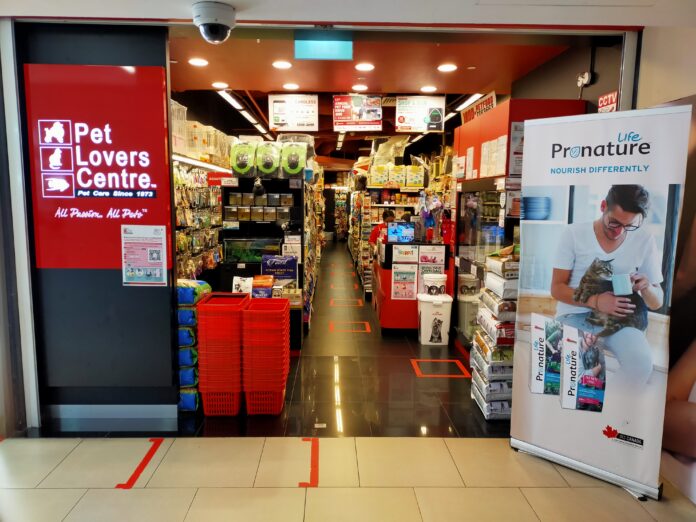Founded in 1973, Pet Lovers Centre started with the aim of providing customers with everything they need to pamper their pets. In 1999, they opened their first themed “The Pet Safari” store to bring the best pet products and services together under one roof.
Today, the brand’s maroon logo is a familiar feature in Singapore’s malls, even introducing trained veterinarian services at their retail stores. Not content to stay a brick-and-mortar business, the company has also added digital Pets Magazines, and expanded their eCommerce platform and presence on various online marketplaces.
Their journey to provide pet owners both offline and online with a robust Customer Experience (CX) has been facilitated by working with Zendesk. SMEhorizon speaks with Elaine Tan, Head of Customer Service at Pet Lovers Centre on their company’s CX challenges, how working with Zendesk has helped them, and their insights from the process. Jenny Choo, RVP of SMB, APAC, Zendesk also provides insights on the key trends in CX and how Singapore’s SMEs can do more to leverage its potential.
Meeting customer expectations both online and offline
Tan shares that a key challenge faced by Pet Lovers Centre (PLC) has been that customers want the company to be easily accessible both online and offline. “They also expect us to achieve a high level of service quality, be fast, dependable and empathic,” she adds.
These tall orders are now the name of the game. Choo notes that across the board, “customer expectations are rising and they are increasingly expecting brands to meet them where they are, under their terms, and through seamless and engaging interactions.”
Seamless, omnichannel experiences across all points of contact, as well as deeper personalisation in online experiences through AI are some key areas that consumers expect, observes Choo.
However, she adds, “the current CX landscape actively contributes to negative consumer emotions, which is easily avoidable. Business leaders need to understand that CX is shaped by consumer wellbeing and sentiment, and more need to increase their budget on tracking and improving customer emotions in relation to customer experience.”
Data as an enabler
Meeting customers’ expectations relies on understanding their needs. Tan says that PLC has a framework through which they have developed a process that evaluates every service touchpoint. “Through the reliable monitoring of these measurements, we are able to analyse and improve our service standards,” she adds.
In order to achieve the above, PLC worked with Zendesk to collate relevant information consistently and reliably across the organization. This has involved integrating various channels – web forms, Live chat, mobile messaging, and social media platforms – onto a customer support platform.
Offline touchpoints are also carefully managed. “We have printed banners at our retail stores where customers can obtain information on the products or contact our support team,” says Tan.
“Even at every sales transaction, we will offer customers a service rating button where we can record their service experience. We have also established a target to achieve a service rating KPI of above 96%. At this point, we will utilise the data reporting tool, and if we observe that the performance is below our threshold, we will develop an appropriate action plan for service improvement.”
Such a thorough and dedicated approach is not one always taken by businesses. Choo says that “many businesses still view CX as a cost centre, with just 28% of businesses in Singapore indicating training of customer service agents as an operational priority.
“This is despite it being clear that when it comes to resolving issues, customers resonate more with empathetic, well-trained agents – and 71% of businesses across APAC are more likely to purchase from a business that cares about their emotional state. Only 33% of leaders currently view customer service as a revenue driver, signalling the need for a mindset shift.”
Technological trends in the CX sphere
Choo states that one of the biggest trends observed is Artificial Intelligence and its growing use cases in CX. “Businesses need to think of AI as a partner to support their CX capabilities – a way to complement their employees’ efforts to collectively drive productivity and elevate the customer experience.
“This should be coupled with insights from customer interaction data that can achieve deeper personalisation and build trust. This has a ripple effect, whereby customer retention increases and customer acquisition costs will in the long run, decrease.”
PLC’s own forays into AI has paid off. Shares Tan: “To assist customers in finding quick solutions, the team has also established a Help Centre, which contains over 500 articles,” she continues. This platform is also equipped with an integrated ChatBot function to provide 24/7 customer support and it is able to scan our articles using AI technology to provide suggestions to customers.”
Besides reducing their First Response Time and Full resolution Time, “this approach has also allowed agents to focus on helping customers with challenging cases and to ensure that we consistently provide high-quality service,” she concludes.
CX – not just for frontline employees
For SMEs with limited resources, achieving CX can seem like a daunting task. One way to achieve this, shares Choo, is through a company-wide shift to a customer-centric culture. “That means putting the customer at the heart of everything. Having this mindset builds high-quality, seamless services that would keep customers coming back for more.
“Being customer-centric is not a responsibility that falls only on the customer service team, or any single team. It requires an organisation-wide shift that starts with accountability from leadership at the very top,” she adds.
Tan agrees that understanding customer’s needs is key in this endeavour, and suggests that seeking input from them is the best method to learn about their needs. “This is why PLC has incorporated survey rating buttons into offline retail touchpoints and online touchpoint surveys, including Net Promoter Score and customer service support evaluations.
“On top of these, we also conduct regular inspections (e.g., mystery shopping, quality assurance checks) to ensure that the fundamental needs of customers are being fulfilled”.
At the same time, keeping a pulse check on customer service teams is equally important, according to Choo. “In recent years, customer service agents have emerged as our forgotten frontline warriors, working tirelessly behind the scenes to manage rising customer expectations at a crucial turning point, as basically everything has shifted online.
“SMEs would be wise to invest even more in the wellbeing of their frontline agents, to keep teams happy and well-supported with the relevant training, tools and technology to do their job well. This becomes even more crucial for these businesses with lean teams, who simply cannot afford to lose talent as workloads increase.
For PLC, this has meant providing robust training for frontline employees, as well as providing clear and quantifiable targets that are analysed from holistic perspectives.
“Ultimately, empathy and customer-centricity should always be the guiding principle behind every leader’s decision, as they find ways to build their technological capabilities to create a memorable customer journey,” Choo concludes.














